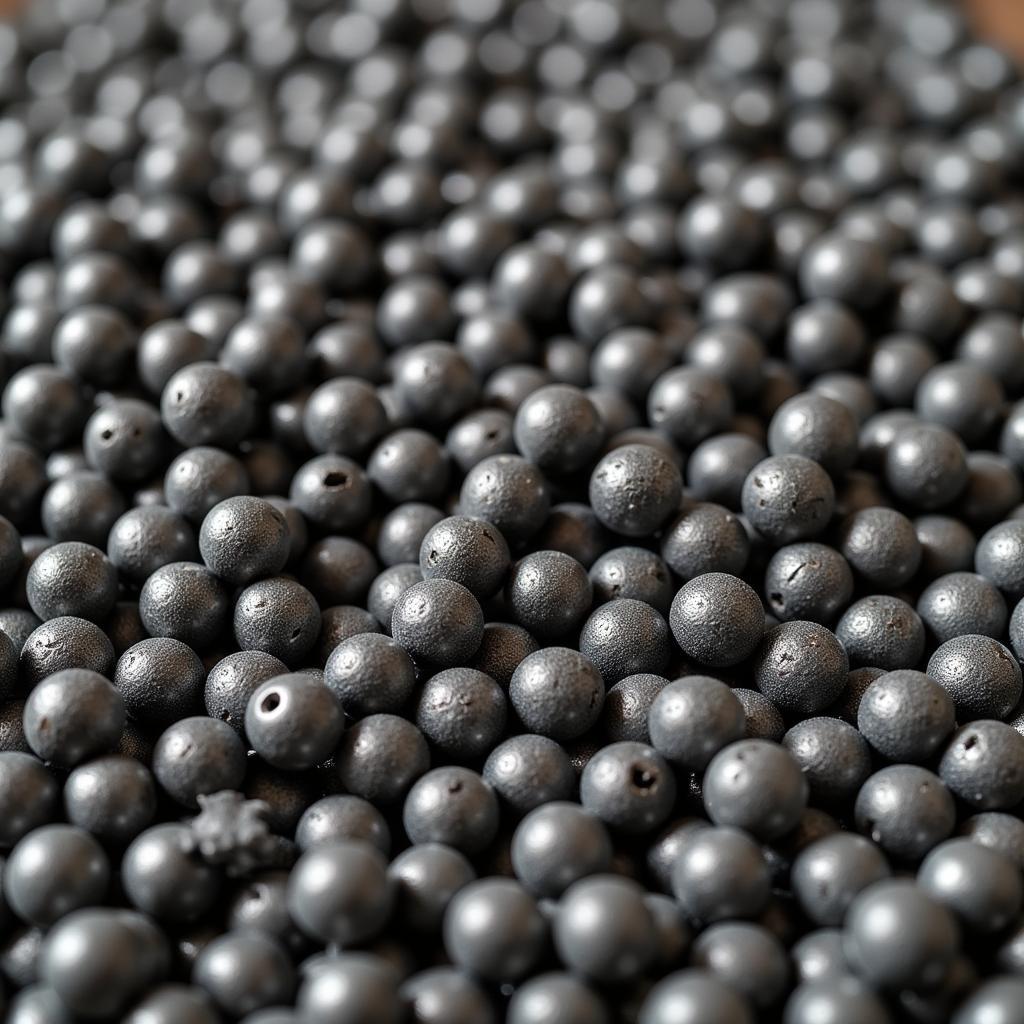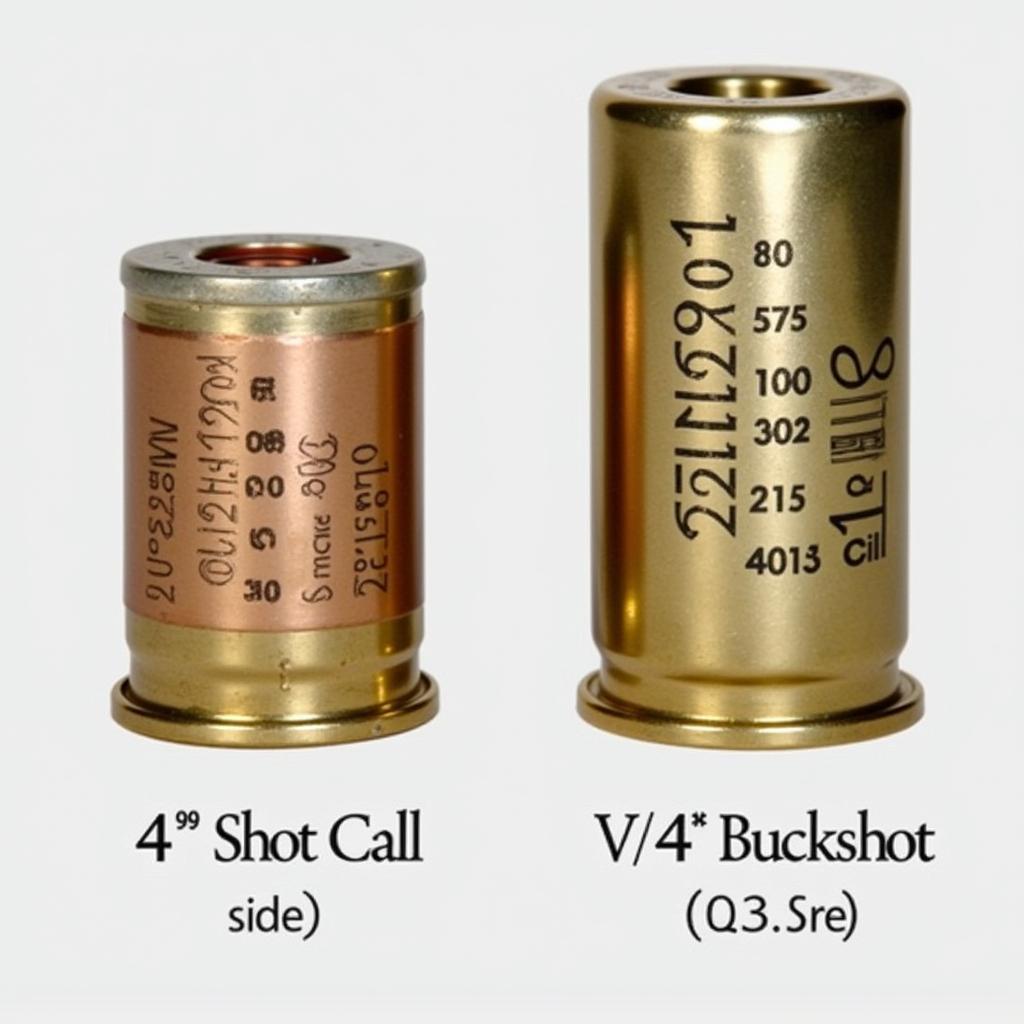#4 Shot vs #4 Buckshot: Understanding the Difference
November 28, 20244 shot and #4 buckshot are often confused, but they are distinct types of shotgun ammunition with different applications. Understanding the differences between these two loads is crucial for safe and effective shotgun use. This article will delve into the specifics of each, exploring their unique characteristics and helping you choose the right ammunition for your needs.
What is #4 Shot?
4 shot refers to small, lead pellets typically used for hunting small game like birds and rabbits. It’s a popular choice for upland bird hunting and offers a good balance between pattern density and pellet energy.  Close-up of #4 shot pellets Imagine a cloud of these small pellets spreading out upon firing, creating a wide pattern effective for hitting fast-moving targets. The smaller size of #4 shot means more pellets per shell, increasing the likelihood of a hit.
Close-up of #4 shot pellets Imagine a cloud of these small pellets spreading out upon firing, creating a wide pattern effective for hitting fast-moving targets. The smaller size of #4 shot means more pellets per shell, increasing the likelihood of a hit.
What is #4 Buckshot?
4 buckshot, on the other hand, consists of larger lead pellets designed for larger game or self-defense. These pellets are significantly larger than #4 shot, delivering considerably more energy on impact.  Close-up of #4 buckshot pellets This increased power comes at the cost of a less dense pattern, making precise aiming more critical. While #4 buckshot can be used for hunting deer at close range, it’s more commonly employed for personal protection or law enforcement applications. #4 Buckshot vs 00 buckshot provides an interesting comparison of energy and applications.
Close-up of #4 buckshot pellets This increased power comes at the cost of a less dense pattern, making precise aiming more critical. While #4 buckshot can be used for hunting deer at close range, it’s more commonly employed for personal protection or law enforcement applications. #4 Buckshot vs 00 buckshot provides an interesting comparison of energy and applications.
Key Differences Between #4 Shot and #4 Buckshot
The most significant difference between #4 shot and #4 buckshot lies in the size and weight of the pellets. This disparity directly impacts their effectiveness on different targets. #4 shot, with its smaller pellets, is ideal for smaller game where a dense pattern is necessary. #4 buckshot, with its larger, heavier pellets, is better suited for larger game requiring more stopping power.
- Pellet Size: #4 shot pellets are much smaller than #4 buckshot pellets.
- Pellet Count: A #4 shot shell contains significantly more pellets than a #4 buckshot shell.
- Effective Range: #4 shot is effective at shorter ranges due to the lighter pellets losing velocity quickly. #4 buckshot maintains its energy over longer distances.
- Intended Use: #4 shot is primarily used for bird hunting. #4 buckshot is typically used for larger game or self-defense.
“When choosing between #4 shot and #4 buckshot, the intended target is the primary consideration,” explains firearm expert, John Smith, of the National Shooting Sports Foundation. “Understanding the difference in pellet size and energy is paramount for safe and ethical hunting.”
Choosing the Right Ammunition
Selecting the right ammunition depends entirely on your intended use. For small, fast-moving targets like birds, #4 shot is the preferred choice. For larger game or self-defense situations, #4 buckshot is the more effective option.  Comparison of #4 shot and #4 buckshot shells Remember to always consider the legal regulations regarding hunting with specific types of ammunition in your area.
Comparison of #4 shot and #4 buckshot shells Remember to always consider the legal regulations regarding hunting with specific types of ammunition in your area.
“It’s also crucial to consider the shotgun choke when selecting ammunition,” adds firearms instructor, Jane Doe, of the American Firearms Training Academy. “Different chokes influence the spread of the shot pattern, further affecting the effectiveness of the chosen load.” More information about shotgun chokes can be found on 4 di.
In conclusion, #4 shot and #4 buckshot, despite their similar numerical designations, represent vastly different shotgun loads. #4 shot is best for small game, offering a dense pattern of small pellets, while #4 buckshot provides the stopping power needed for larger game or self-defense. Choosing the right ammunition requires careful consideration of the intended target and an understanding of the characteristics of each load.
When you need assistance, please contact Phone Number: 0915117113, Email: [email protected] Or visit our address: Hamlet 3, Binh An, Phu Thuong, Vietnam, Binh Phuoc 830000, Vietnam. We have a 24/7 customer care team.